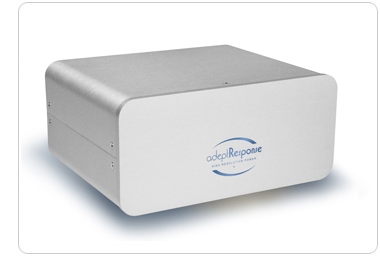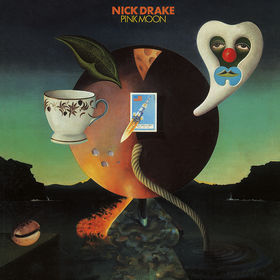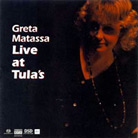AUDIENCE aR6T POWER CONDITIONER AND Au24 POWERCHORD
| AUDIENCE aR6T POWER CONDITIONER AND Au24 POWERCHORD |
|
|
|
September 2009 |

Prelude Verdant
For the fortunate music lover here in the Northeast, summer beckons with the gift of a trek to the verdant Berkshire Hills in Western Massachusetts to visit the summer home of the Boston Symphony Orchestra (“BSO”) at the Tanglewood Music Center (“TMC”). On a late afternoon in July, I ventured through “Bernstein’s Gate” onto the spacious lawns of the TMC, feeling like a kid in a candy store. Passing under ancient oaks and maples, (with the sun setting on the lake and the rosy Berkshire spires beyond), I came by surprise upon a rehearsal of the BSO in the cavernous Koussevitzky Music Shed. It was delightful to see members of the BSO clad in their summer attire of jeans and baseball hats rehearsing with informal and jovial panache. The BSO was rehearsing for its upcoming performance of Dvorak’s Symphony No. 8, led by the ebullient conductor, Herbert Blomstedt. Only in a special place like Tanglewood can you relish Dvorak’s huge brass chorus thundering over a vast green landscape, (with the competing calls of nesting birds in the rafters of the Koussevitzky Music Shed echoing such drama). Oblivious to the cacophony of a birds’ chorus above him, Blomstedt paused during the rehearsal to repeat certain sections of Dvorak’s score with gentle instructions for various sections of the orchestra. These included little gems such as: (directed to the violins) “Play this passage softly like it is a memory from 50 years ago” or (directed to the trombones): “Play this as if it were your Last Rites!”
In the evening, I ventured over to the more intimate confines of Seiji Ozawa Hall to hear a recital by violinist Christian Tetzlaff and pianist Alexander Lonquich in their final (of three nights) of recitals performing the complete Beethoven Sonatas for Violin and Piano. Ozawa Hall is a beautiful modern recital hall, constructed of wood with lots of natural light and a wafting scent of pine (reminding one of a bucolic summer camp building). Just before the performance starts, the back wall of Hall is rolled away to reveal the expansive lawn and the leafy hills beyond. Many listeners on the lawn bring exotic lanterns to light up the Twilight, casting a wonderful, calm beauty over the lush setting and their inviting picnic spreads. And what music making there was this evening! The musical partnership between Tetzlaff and Lonquich was astounding, filling Ozawa Hall and its grounds with chamber music of the highest artistry and joy. Tetzlaff and Lonquich brought a special weightlessness, a great tactile beauty to every inner detail of Beethoven’s final Sonatas. Tetzlaff’s ability to create a myriad of dynamics, including such lithe tones to the tip of his bow, were heard in amazing clarity. The audience held its collective breathe as it followed every nook and cranny of Tetzlaff’s sparkling phrasing or Lonquich’s pensive pianissimos until the last, dancing note was heard, fading away into the vastness of the lawn and the darkness of the Berkshire Hills beyond. On my ride home, (with a full yellow moon lighting the way), I was convinced that some of the magic of what I had just heard in this extraordinary live performance was also captured, (to no small measure), by what I was hearing in my system at home, with the addition of Audience’s latest aR6T power conditioner and power cord, their Au24.
Andante Technique
The aR6T is the latest in Audience’s long and distinguished line of power conditioning products. The spiffy and compact aR6T has six outlets and uses a Neutrik Powercon connector to attach a fitted Audience power cord. (Audience also manufactures a unit with twelve outlets, the aR12T, and most recently, introduced a two-outlet version, the aR2T). Fit and finish is superb, with great attention to details like sturdy Hubbell AC outlets. All units are built around Audience’s “Adept Response” proprietary technology (“AR”). AR incorporates a complex system of fully passive filter circuits, individually selected to ensure that no filter adds noise to the system. This passive filtering system is linked to a power factor correction system. This system operates in two distinct ways. First, through its proprietary circuitry and isolation technology, it isolates each of the aR6T’s six outlets from one another. Next, this power factor correction system targets the fluctuating power source that enters from utility pole to our listening spaces, (further distorted by our use of household appliances). The AR power correction system seeks to transform this fluctuating current (through the use of additional isolation and circuitry techniques, including magnetic circuit breakers instead of relays or switches) to insure a stable and clean power source. The newest “T” models of the AR power conditioner product line incorporate the addition of Teflon capacitors. Audience CEO John McDonald, (he, like Maestro Blumstedt, the picture of ebullience for all things musical) referred me to Roger Sheker, Audience’s engineer, for an explanation of why Teflon is superior as a dielectric material. Sheker states that Teflon has the least dielectric “absorption” of any material. This means that as a mechanical effect, Teflon has the least amount of stored energy retained and released over the period of the natural deformation of any dielectric material. In addition, according to Sheker, Teflon has the lowest “dissipation” factor of any dielectric material, in that when charged, it has the lowest percentage of any dielectric in turning such energy into heat loss. As a result, pulses of energy or signals passing through a Teflon capacitor pass through it faster and cleaner, with little or no “overlapping or time smear” as McDonald describes.
Much like the Teflon description in the aR6T, McDonald describes the composition of his latest power cord, the “Au24 powerChord,” in terms of advances made in the un-obstructed flow of low-level signals. This is accomplished by utilizing the same mono crystal (OHNO) copper strands, (rather than conventional copper), that Audience has used in producing their famed Au24 interconnect and loudspeaker cables. I now looked forward to hearing what differences, if any, occurred when this new Au24 powerChord was substituted for the Audience PowerChord “e” that was provided as the standard power cord with my aR6T unit.
Allegro con brio
Knowing that isolated, dedicated power is essential to gaining the best sound from any high end system, I had taken two steps to get my baseline system sounding as great as I thought it could. I had installed a dedicated circuit, (with wiring and outlets provided by Virtual Dynamics), and was using a Nordost Thor power conditioner (that I had reviewed several years ago in these pages and considered my reference power conditioner). I knew well my system’s abilities with the Thor in place, and now replaced it with the aR6T (first with its Audience powerChord “e” that it was shipped with, and later with the newest Au24 PowerChord). Over many sessions, I would listen to the baseline system with the aR6T, then remove it or replace it with the Thor or no power conditioning at all. I would go back and forth with several different combinations and sequences, utilizing the same batch of reference recordings that I know well. In the end, the results were abundantly clear: the aR6T took everything that the Thor had provided and then elevated my system to another level of performance and musical involvement.
For example, I returned often during these sessions to reminisce about the sheer artistic power of Tetzlaff and Lonquich’s live recital at TMC, particularly in how they brought an uncanny weightlessness and vividness to every detail and nuance of Beethoven’s genius. I also recalled the crackling feeling of the night air and how silent (yet alive!) it felt within the acoustic space of Ozawa Hall. This made every note of the violin and piano stand out distinctly, each floating on a cushion of this night air from the stage to the back of the Hall and into the lawn and Hills beyond.  It was an unforgettable evening and of course, could never be fully duplicated or reproduced either in a recording studio or on one’s audio system. However, while listening to Tetzlaff’s solo recording of J.S. Bach’s Sonatas and Partitas [Hanssler 98250] on my system, (with the addition of the aR6T), here was a great new slice of this vividness of performance and sense of recording space that I yearned for! With the aR6T in place, Tetzlaff’s violin became a much more dramatic instrument, full of inner life. The woody character of Tetzlaff’s solo violin was much more tactile, his notes stopping and starting on a dime (with even those furious Prestos rendered with precision). Tetzlaff’s unique gift of creating warm vibratos in the fastest of phrases was there to behold, as was all of the myriad diversity of his dynamic range. The insertion of the aR6T brought a new, dance-like, joyful aliveness to the recording, (a slice of what I had heard at Ozawa Hall), with a natural flow of notes into a wider and deeper soundstage than I ever thought possible in my system. The same recording with the Thor in place was still beautifully rendered, but lost much of the magic of these comments, with a somewhat flatter, less dramatic and less open presentation. Like a trustworthy (and deep pocketed) usher who winks at you for all your good fortune, the aR6T seats you in the best seat in the house to enjoy all of the musical action that a particular recording affords. Its insertion improved the Hanson Prince V.2’s already superb resolving ability, (particularly in the upper midrange and treble) and informed me, for the first time, that I had a long way to go in mining the full potential of my EmmLabs CDSA player and its beautiful way with inner resolution and dynamic flow.
It was an unforgettable evening and of course, could never be fully duplicated or reproduced either in a recording studio or on one’s audio system. However, while listening to Tetzlaff’s solo recording of J.S. Bach’s Sonatas and Partitas [Hanssler 98250] on my system, (with the addition of the aR6T), here was a great new slice of this vividness of performance and sense of recording space that I yearned for! With the aR6T in place, Tetzlaff’s violin became a much more dramatic instrument, full of inner life. The woody character of Tetzlaff’s solo violin was much more tactile, his notes stopping and starting on a dime (with even those furious Prestos rendered with precision). Tetzlaff’s unique gift of creating warm vibratos in the fastest of phrases was there to behold, as was all of the myriad diversity of his dynamic range. The insertion of the aR6T brought a new, dance-like, joyful aliveness to the recording, (a slice of what I had heard at Ozawa Hall), with a natural flow of notes into a wider and deeper soundstage than I ever thought possible in my system. The same recording with the Thor in place was still beautifully rendered, but lost much of the magic of these comments, with a somewhat flatter, less dramatic and less open presentation. Like a trustworthy (and deep pocketed) usher who winks at you for all your good fortune, the aR6T seats you in the best seat in the house to enjoy all of the musical action that a particular recording affords. Its insertion improved the Hanson Prince V.2’s already superb resolving ability, (particularly in the upper midrange and treble) and informed me, for the first time, that I had a long way to go in mining the full potential of my EmmLabs CDSA player and its beautiful way with inner resolution and dynamic flow.
 With the aR6T as trustworthy usher, the soul of other favorite recordings sprung vividly to life, whether it was the boisterous Cuban Rumbas of Chucho Valdez or the quiet dynamo of Nick Drake’s solo acoustic guitar. Drake’s strums on “Road” from his gorgeous Pink Moon [Hannibel 4436] were revealed for the first time in all of their nylon, blunted quality, (like bolts of dry lightning) as Drake pounded that vibrating bass string into decay. Ah, and what did the aR6T do to the recordings of the male voice, as diverse as Drake’s to the dark husky voice of Greg Brown? Its insertion transformed them into a more living, breathing thing like I had never experienced before. Listening to Brown’s gem of a live recording, Solid Heart [available from inharmony.org to benefit that excellent organization] (particularly to Brown’s gruff sliding vocals on his soulful cut, “Lullabye”) was like nothing I had heard before with the aR6T ushering me into the best seat in the Majestic Theatre in Corvalis, Oregon. Here for the first time was every one of Brown’s simple vocal gestures revealed: his sly wit, his lingering pauses; his holding and letting go of each vocal in syncopation with his crisp guitar strums, whose leading edges were clean and crisp.
With the aR6T as trustworthy usher, the soul of other favorite recordings sprung vividly to life, whether it was the boisterous Cuban Rumbas of Chucho Valdez or the quiet dynamo of Nick Drake’s solo acoustic guitar. Drake’s strums on “Road” from his gorgeous Pink Moon [Hannibel 4436] were revealed for the first time in all of their nylon, blunted quality, (like bolts of dry lightning) as Drake pounded that vibrating bass string into decay. Ah, and what did the aR6T do to the recordings of the male voice, as diverse as Drake’s to the dark husky voice of Greg Brown? Its insertion transformed them into a more living, breathing thing like I had never experienced before. Listening to Brown’s gem of a live recording, Solid Heart [available from inharmony.org to benefit that excellent organization] (particularly to Brown’s gruff sliding vocals on his soulful cut, “Lullabye”) was like nothing I had heard before with the aR6T ushering me into the best seat in the Majestic Theatre in Corvalis, Oregon. Here for the first time was every one of Brown’s simple vocal gestures revealed: his sly wit, his lingering pauses; his holding and letting go of each vocal in syncopation with his crisp guitar strums, whose leading edges were clean and crisp.
 Similarly, with female vocalists, such as the sassy Seattle-based vocalist, Greta Matassa, [on her superb Live At Tula’s (Jazz Stream Records SACD)], the aR6T again ushered me to the best seat in this intimate Seattle club. When finger snapping starts to drive the intro to Clifford Anderson’s walking acoustic bass on “Black Coffee,” the aR6T’s insertion put real flesh and bone to those audience snaps and added a new, vividly dramatic quality to Matassa’s vocals. You could almost feel the walls of Tula’s shake and reverberate with each of Matassa’s soars, growls and beautiful vocal moves. Remove the aR6T and everything collapsed into a less vital musical scene, less open, thicker, flatter in both image dimensionality and stage dimensions; as if we had been moved to the far end of the room by a rich patron who scored our best seat at Tula’s. Anderson’s bass was also instructive: his glorious steps down the stairs to the dB basement were absolutely more precise and defined with the aR6T in my system. With the Thor in place, Anderson’s bass was less taut, with lowest tones losing some of their specificity and distinct pungent quality achieved with the aR6T. And speaking of bass, don’t forget the Cuban Master, Orlando Cachaito Lopez, as his acoustic bass tangles with sinuous verve alongside Policarpo Tamayo’s flute on their duet, “Redencion,” taken from Lopez’s dynamic self-titled recording [World Circuit 79630]. The insertion of the aR6T here was revelatory, with much more open space between the players, revealing a flute flying and piercing without any sense of compression (even in its highest calls). Miguel Diaz’ congas were transformed from being slightly flat and thick images to being pulsating, sharp images with the aR6T. Only with the aR6T in place could I explore fully where Diaz hit the drums’ inner and outer surfaces with his hands and palms, starting and stopping on a sizzling dime in a blaze of action.
Similarly, with female vocalists, such as the sassy Seattle-based vocalist, Greta Matassa, [on her superb Live At Tula’s (Jazz Stream Records SACD)], the aR6T again ushered me to the best seat in this intimate Seattle club. When finger snapping starts to drive the intro to Clifford Anderson’s walking acoustic bass on “Black Coffee,” the aR6T’s insertion put real flesh and bone to those audience snaps and added a new, vividly dramatic quality to Matassa’s vocals. You could almost feel the walls of Tula’s shake and reverberate with each of Matassa’s soars, growls and beautiful vocal moves. Remove the aR6T and everything collapsed into a less vital musical scene, less open, thicker, flatter in both image dimensionality and stage dimensions; as if we had been moved to the far end of the room by a rich patron who scored our best seat at Tula’s. Anderson’s bass was also instructive: his glorious steps down the stairs to the dB basement were absolutely more precise and defined with the aR6T in my system. With the Thor in place, Anderson’s bass was less taut, with lowest tones losing some of their specificity and distinct pungent quality achieved with the aR6T. And speaking of bass, don’t forget the Cuban Master, Orlando Cachaito Lopez, as his acoustic bass tangles with sinuous verve alongside Policarpo Tamayo’s flute on their duet, “Redencion,” taken from Lopez’s dynamic self-titled recording [World Circuit 79630]. The insertion of the aR6T here was revelatory, with much more open space between the players, revealing a flute flying and piercing without any sense of compression (even in its highest calls). Miguel Diaz’ congas were transformed from being slightly flat and thick images to being pulsating, sharp images with the aR6T. Only with the aR6T in place could I explore fully where Diaz hit the drums’ inner and outer surfaces with his hands and palms, starting and stopping on a sizzling dime in a blaze of action.
Finale Rejouissance
In my auditions of the aR6T, I kept coming back to that analogy of a sage usher who knows the recording venue he has worked in for many years and seats you in the best seat to hear every nuance of performance and recording venue that a given recording may offer. With the aR6T, everything on recordings is just more vital, more musically engaging and inviting. As such, it is indispensable. It highlights again the importance of obtaining dedicated power to one’s system and then investing in power conditioning to raise that system that you already love to another level of performance. The aR6T is my new reference for a power conditioner and I simply cannot go back to listening without it as my ushering partner in my listening sessions. The aR6T’s price tag of $4600 is costly and a lot of tips for one usher to pocket (and for us to save up for!). But when one has already spent thousands to build a superb audio system in an attempt to get as close as one can to all of the musical action presented on one’s favorite recordings, such an investment is not off the charts by any means. The aR6T reminds me of why I spend hours searching in the back recording bins of places like The Academy Music Store in New York City for that special Tetzloff recording, to bring it home and get the joy of listening to every nuance of his individual music making.
Finally, a word about the significant achievement that McDonald and his team have achieved with their new Au24 powerChord, which is a cost upgrade to the aR6T. The addition of the Au24 powerChord took the aR6T to yet another level of performance in three key areas: speed, focus and presence. With the Au24 linking the aR6T to my dedicated power outlet, leading edges were brushed cleaner; loud transients were more dynamically composed and relaxed; and bass definition was even more precise, especially in the lowest plunges of Cachaito Lopez’s huge bass. With Audience’s special incentives offered to get the Au24 partnered with their aR6T, I highly recommend it as an upgrade to it.
But enough talk! Let’s return to tip that marvelous (aR6T) “usher” again and sit down to listen to music recorded in that special place called Tanglewood. Meet me there! 
![]()
Specifications:
Audience aR6T Specifications
6 Hubbell high-conductivity power outlets
Current/voltage: 15A or 20A/130V, standard; 220V, 230V 240V available
Dimensions: 5”(H); 19”(W); 9”(D)
Weight: 15 lbs.
Prices: $4600 (aR6T); $8000 (aR12T)
Au-24 powerChord: if aR6-T bought with Au24 powerChord, upcharge is $1,550;
a six foot Au24 powerChord is sold separately for $2200.
Company Information
Audience AV
120 North Pacific Street, #K-9
San Marcos, CA. 92069
Tel: (805)-565-4390
Website: www.audience-av.com
E-mail: info@audience-av.com
![]()
Don’t forget to bookmark us! (CTRL-SHFT-D)
Stereo Times Masthead
Publisher/Founder
Clement Perry
Editor
Dave Thomas
Senior Editors
Frank Alles, Mike Girardi, Russell Lichter, Terry London, Moreno Mitchell, Paul Szabady, Bill Wells, Mike Wright, and Stephen Yan,
Current Contributors
David Abramson, Tim Barrall, Dave Allison, Ron Cook, Lewis Dardick, John Hoffman, Dan Secula, Don Shaulis, Greg Simmons, Eric Teh, Greg Voth, Richard Willie, Ed Van Winkle, Rob Dockery, Richard Doran, and Daveed Turek
Site Management Clement Perry
Ad Designer: Martin Perry





Be the first to comment on: AUDIENCE aR6T POWER CONDITIONER AND Au24 POWERCHORD